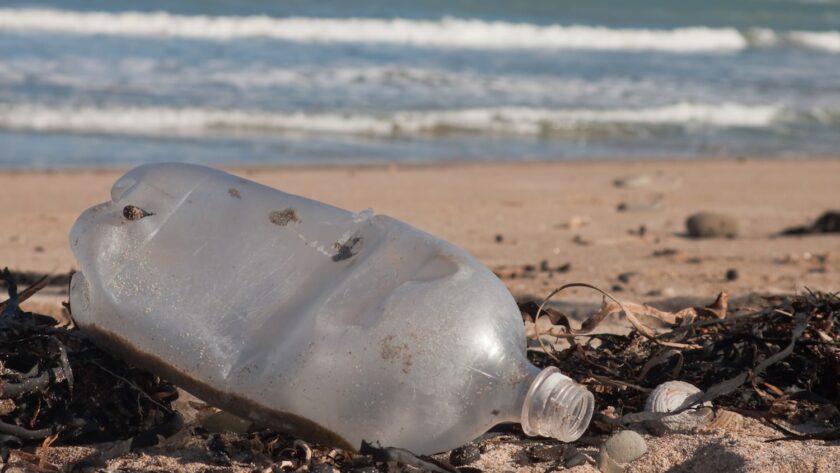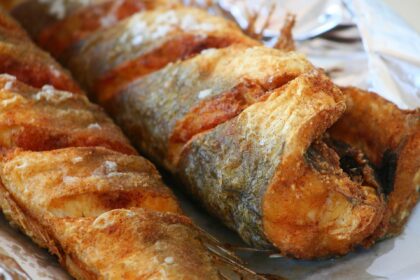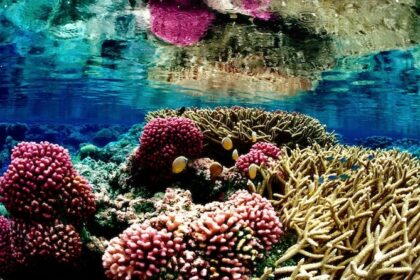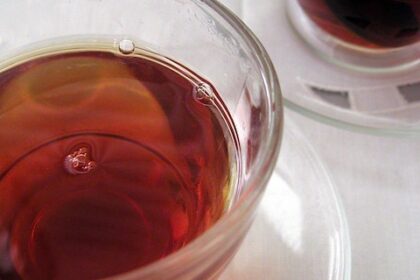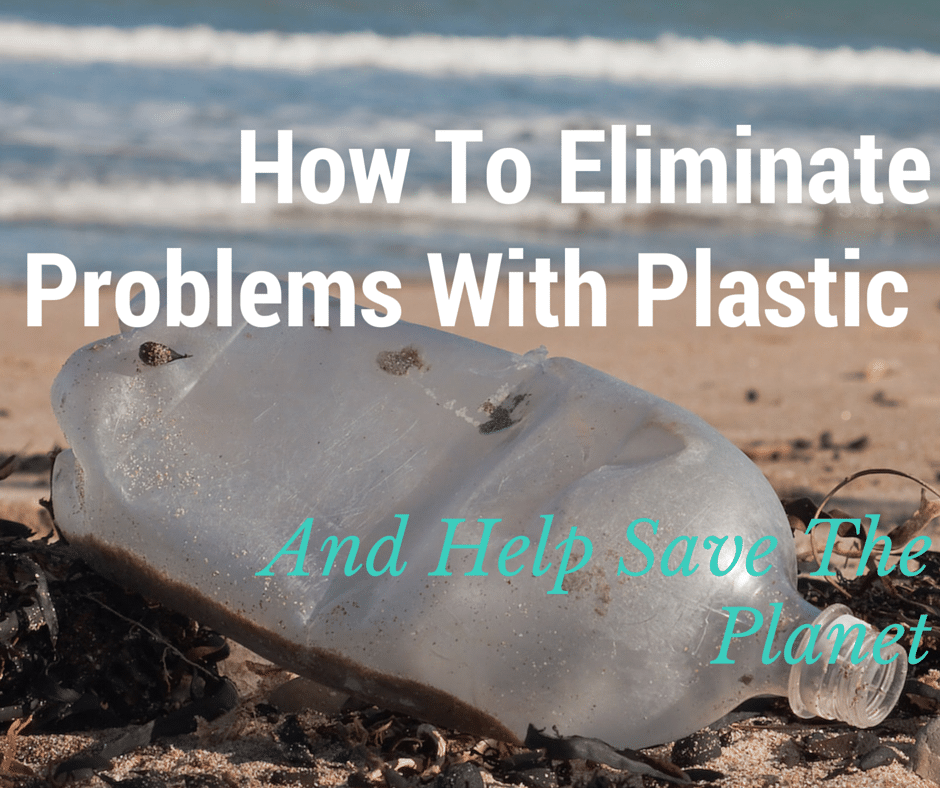
By Tanner Colton of Travelers Against Plastic
The sound of clanging bells strung from the necks of the passing yak wakes me from a deep sleep. The world outside still lies under a blanket of darkness and brilliant, glowing stars. As I pull on my boots for the 10th day in a row, the once vibrant orange laces now dull under a heavy coating of dust and dung, I dream of what treasures my eyes will drink in today in the magnificent Himalayan Mountains.
We step now, the first light of day daring to leap, uninhibited, over the high ridges of the mountains that we have come to know so well; but, with this light comes an ugly companion.
At first I am unable to comprehend something which my eyes behold. Off the path, next to a teal blue glacial river, its thrashing waves sending sparkling mist into the dawn air, I see it.
At first just a glimpse. A glint of light. A distortion in the foliage. Then, its long clear body makes itself apparent. The scuffed sides of a plastic water bottle punch me right in the face.
In a setting of such otherworldly beauty, this diabolical character seems to smirk up at me, as if it knows it does not belong.
From that moment forward I begin to notice my new friend is not alone. A tragedy of such proportion, yet with such a simple solution.
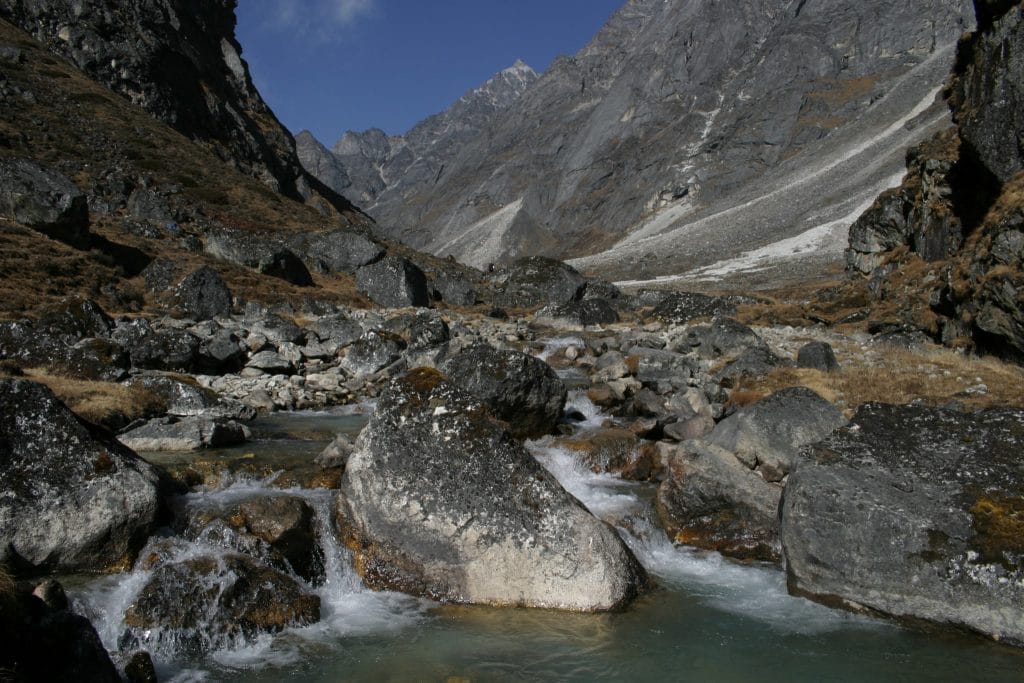
The Problems With Plastic
In case my possibly overdramatic yet 100% true story above was not enough, let’s take a look at the situation.
In the first two months of 2012, 8.1 million U.S. citizens traveled abroad, according to data released by the U.S. Office of Travel & Tourism Industries. That figure equates to 48.6 million a year.
Three bottles per day for a single 2-week trip = over 3.4 billion plastic water bottles used.
That’s a boatload of plastic. And that was in 2012!
Where does it all go?
If you ask me it ends up next to my river in the mountains (he said bitterly).
In reality, those billions of plastic bottles end up littering beaches, streets, towns and villages the world over. I cannot tell you the number of pristine landscapes and thriving city streets I have seen literally covered with plastic.
And for what?
The proliferation of plastic water bottle use in the developing world has exploded over the last few decades.
The growth and expansion of landfills and dumps to house all this waste has spread throughout popular travel destinations impacting the ecology and the culture of these once magnificent places.
I again ask, for what?
So we can drink re-treated tap water sold to us by Nestle and Coke and feel “safe” in a place we think is dirty and diseased?
The reality is that we, as travelers and lovers of the world, have created a demand for bottled water by our inability to think of other ways to quench our thirst while we quench our need to experience the world.
I would love to see a planet where people do not have to live in dumps, spending their days and nights knee-deep in my trash, sifting through and organizing my waste, so that I cannot be thirsty.
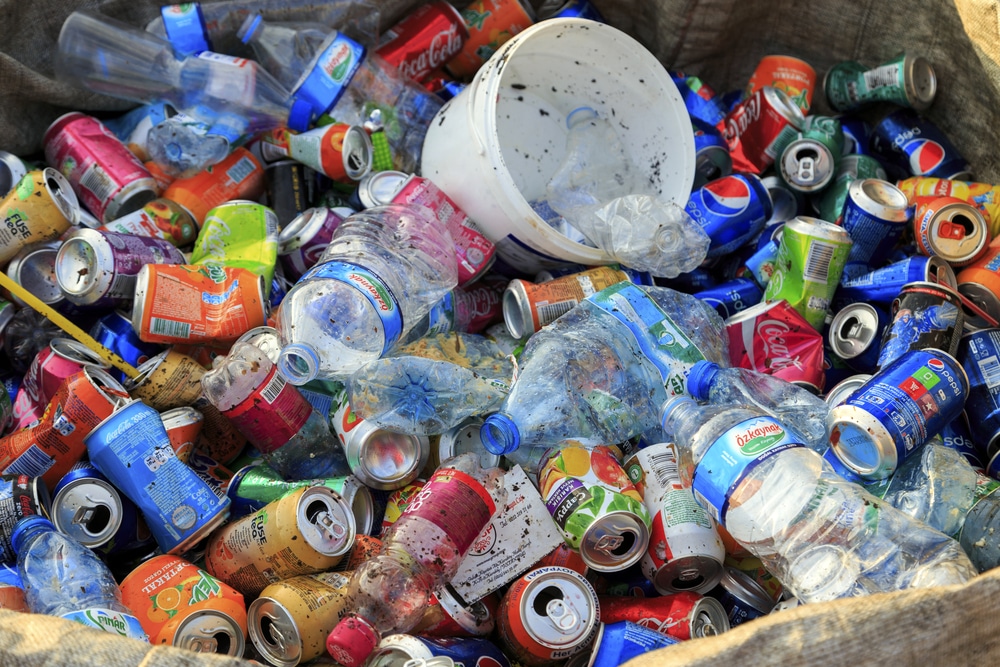
If we want to stop the destruction of wild places and natural beauty, the pollution and degradation of towns and villages, and ensure the next generation the ability, no the right, to enjoy this Earth we have to change. Now.
Let's see a planet where people don't have to live in dumps so I can quench my thirst. #water Click To TweetA Solution
I am about to do something drastic.
Something that might stir you to your core.
I am going to present an idea and ask you to stick with me. This is truly groundbreaking and innovative stuff here. I won’t be shocked if the Nobel Society is at my door about this.
Are you ready?
What if we…
Didn’t… Use… Plastic…
Plastic-free travel and a plastic-free lifestyle is a crazy and outlandish idea in our modern and technologically advanced society.
Okay, pardon the sarcasm. There is real value in this and it is much, much easier to do than you think.
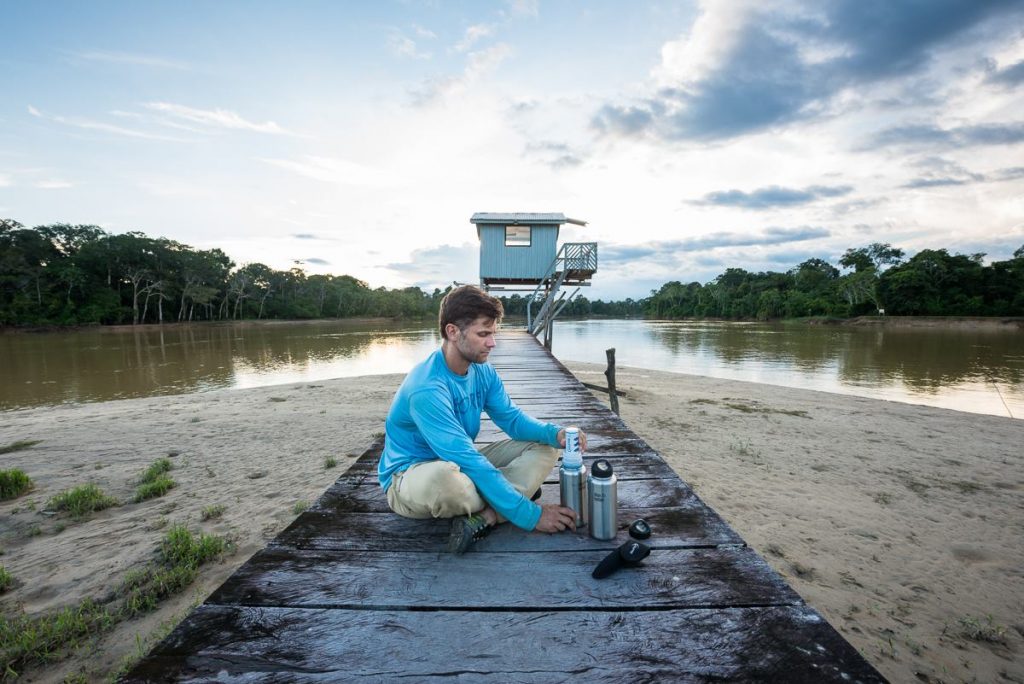
There is a movement started by an organization called Travelers Against Plastic (TAP).
The TAP Campaign is an outreach initiative which aims to educate global travelers about the harmful impacts of plastic water bottle usage and to encourage travelers to be prepared to clean their own drinking water.
I volunteer there and have worked with its co-founder, Chris Mackay, for a number of years. The main goals of TAP are twofold:
- To rally businesses and organizations in the tourist industry around the world to take the TAP Pledge and ban the use of plastic water bottles for their employees and clients.
- To educate travelers on the need to curb waste and the alternative methods to water treatment, namely, cleaning your own water when you travel.
Clean my own water? Like with a towel? A brush? Even though I would love to see a bunch of people scrubbing their water, just because it would be hilarious, cleaning your own water is a bit different.
This means treating locally sourced water in a number of ways and drinking said water from your own, reusable bottle like a Nalgene or other container.
You can use filters of many kinds, lots of which are portable and very effective. You can use water treatment tablets as well.
But our preferred method is the use of a rechargeable UV light pen like a SteriPen.
A SteriPen uses a UV light bulb to kill 99.99% of bacteria found in water in just 90 seconds. You can take water from a tap in a $5.00 hostel in Kolkata, clean it with the pen and rest assured your thirst will be quenched without having to evacuate your system.
Viola! One less plastic bottle. It’s good for the environment, it’s good for the people who live wherever your adventure has taken you, and it’s easy on the wallet, too.
Are the boring practicalities of the process not doing it for you?
Walk with me next to my river in the Himalayas one more time. Here we are, the warm sun kisses your cheek giving reprieve from the biting cold wind that rushes up the valley.
In the distance, you see ice-capped peaks with braided, glistening streams tracing their rocky spines.
The only sounds are the rush of the river and the laughter of the local children as they run ahead of you on the trail. You drink from your reusable bottle and find your water has run out.
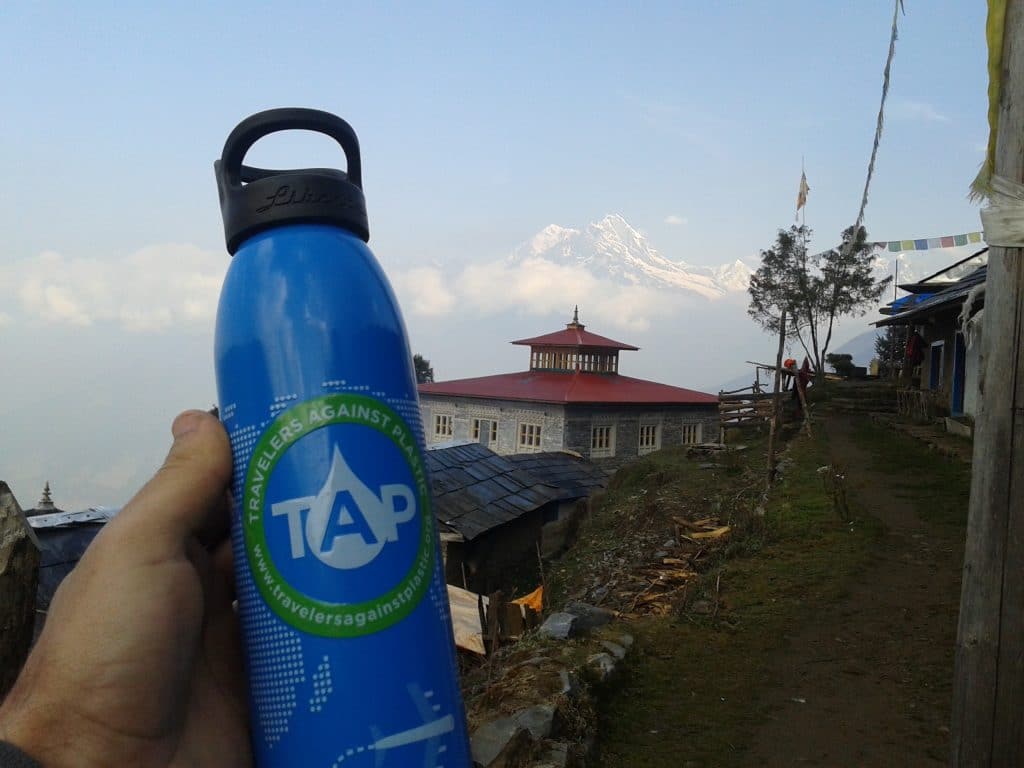
As if transported to an ancient time — a time before cars and cities and, yes, plastic water bottles — you kneel beside the pristine waters and dip your hand in. The river gives graciously to replenish your fluids.
Then you reach into your pocket and take out your lightweight, rechargeable, affordable tool that you picked up for $65 from the TAP website (shameless plug), turn it on, and let the UV light work its magic. It goes to war with those unseen floaties that manifest themselves as a night on the toilet and probably some cries for mommy.
Once done you partake in what can only be described as the nectar of the gods. Water. From a glacier. In the Himalayas. Beats the pants off of plasticy tasting water from Walmart.
My Experience & My Plea
In my years of travel for work and adventure I have learned one big thing.
The value of travel to individuals and to our collective human experience is immeasurable and should not be underestimated.
The understanding it breeds and the connections it makes are truly the only thing that will create lasting change in our lives.
Travel gives us all that through the places and people we meet along the way. But what do we give back?
It is our responsibility to care for those wild, far-flung places we spend our hours daydreaming about at our desks in our cubicles.
My experience has been that we are not doing enough, sadly, and our planet hurls ever more uncontrollably toward destruction.
#Travel gives to use all the time. But what do we #giveback? Click To Tweet
I have cleaned my own water in Africa, Asia, Europe and all throughout the mountains of the Pacific Northwest where I lay my head. In 15+ years of travel I can count on one hand the number of times I have gotten sick from water.
Now, in those moments I would have given anything for things to stop leaving my body with haste and ferocity, but in the grand scheme of my life, they are but a blip.
Not to mention the fact I would trade one night in the fetal position on the bathroom floor for a richer and more cared for planet in a heartbeat.
Looking around our world I see the heavy and unprecedented environmental issues of our time.
I do not want to leave a legacy of litter for future generations. I want them to be able to behold the raw and unbridled power of a jagged glacier as it continues it eons-old journey. I want them to feel the soft pull of a pristine stream as it dives and splashes and carves the Earth.
I want to look into the eyes of my Sherpa friends who call those mountains I love so much home, and see hope and pride and appreciation.
I do not want to see the ill effects of my laziness and irresponsibility. We know better. That is what motivates me and I hope it will motivate you as well.
For more information on the TAP Campaign visit:
www.travelersagainstplastic.org
For information on responsible tourism and opportunities for experience visit:
www.crookedtrails.org
About Tanner Colton
To me travel, service, and adventure are three of the most vital aspects of life, the same as water, food, and shelter. Seeking out authentic and responsible travel experiences has lead me to the far corners of the Earth and on adventures I never thought possible. Having worked in community development for the past 7+ years, the need to educate travelers on the effects of tourism and what we can do to improve the places we love is a mission I pursue with a fierce passion. My volunteer work with TAP is an extension of my own desire to see the wild places where I feed my spirit cared for and left better than I find them.
About TAP
TAP: The TAP (Travelers Against Plastic) Campaign is a global outreach initiative that envisions a world where plastic litter is a thing of the paste. We work to catalyze a self-sustaining global movement resulting in the near-elimination of travelers’ dependence on plastic water bottles. Grounded in the ethics of responsible travel, the TAP campaign aims to educate global travelers about the harmful impacts of plastic water bottle usage and to encourage travelers to be prepared to clean their own drinking water. TAP was founded in partnership with Crooked Trails, an eco-tourism nonprofit based in Seattle, WA, by Chris Mackay and Kurt Kutay. It continues to grow in its reach and impact.
Guest Author
Latest posts by Guest Author (see all)
- Central Restaurante: An Innovative Terroir Tasting Experience In Lima - Jun 26, 2018
- How To Make Youtiao Like You’re From China - Feb 22, 2018
- How To Eat Your Way Around Georgia (The Country) - Sep 25, 2017
- How To Make Apfelstrudel Like You’re From Austria - Mar 6, 2017
- Top 10 Fried Snacks To Savor On An Indonesian Adventure - Jun 23, 2016

